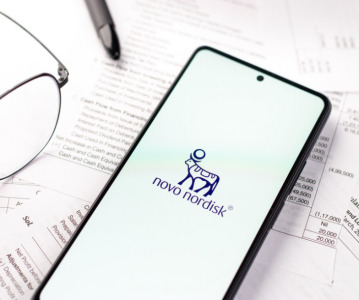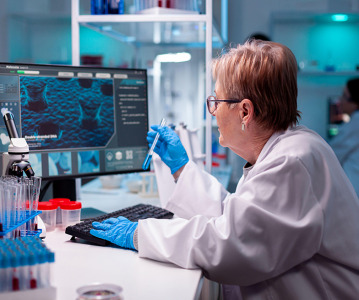Smart Packaging: Adding Value and Enhancing the Patient Experience

The ability of pharmaceutical packaging solutions to add value and improve the experience for both patients and healthcare professionals was a core theme at Pharmapack Europe 2020, with an emphasis on how the industry can identify opportunities via technological advancements in smart packaging
Pharmapack Europe is an annual exhibition and conference for Pharmaceutical Packaging, Drug Delivery, Medical Devices and Machinery. This year's conference in Paris kicked off with a session exploring patient-centricity and how smart connected devices are already transforming drug delivery.
Rising pharmaceutical cost pressures and volume growth deceleration are motivating pharmaceutical companies to attempt to extract further value from existing medicines rather than solely pursuing new molecules, according to the conference’s first speaker, Aurelio Arias, Engagement Manager, European Thought Leadership, IQVIA.
Arias said companies were changing from a largely tactical, strategic play to focusing on so-called value-added medicines – existing off-patent molecules that are combined or reformulated to offer benefits for patients and healthcare systems.
He said that while improving efficacy, reducing side effects and providing additional therapeutic options were all valid ways to enhance the value of a medicine, the one with the most untapped potential was improving the patient experience.
“This can be making sure you add another modality – this could be a new device or changing the way the patient uses the medicine,” Arias said.
He said that in terms of administration, oral delivery accounts for nearly half of value-added medicines, with injectables the fastest growing segment with a 5-year compound annual growth rate of 14%.
Behaviour design to be linchpin of digital health strategy?
Paul Upham, Head of Smart Devices at Roche/Genentech told the conference that developers of digital health tools designed to improve adherence to medicines need to make behavioural science the cornerstone of their strategy if they are to keep patients engaged and motivated.
He defined behavioural design as taking cognitive neuroscience behavioural economics and proven experiments and marrying that with design thinking “to really understand what is likely to overcome some of the cognitive biases that patients and all humans have.”
“Many pharma apps, when trying to improve medication adherence, focus on having the patient track everything that they’re doing, and doing lots of logging,” he said. “Accurate logging of medication adherence is great for clinicians and risk holders but it’s terrible for patients because they get less than zero value from it because they have to do work.”
Upham said the tech industry had succeeded quite well in applying behaviour design, employing behavioural scientists to run departments with the remit of applying cognitive neuroscience principles to user interface design to keep users addicted to their platforms.
“We’re thinking very carefully about how to take these same principles and what we understand about how the brain works, not to make patients addicted to our pharma apps but really to support patients and improve self-management that will hopefully lead to improved outcomes,” Upham said.
Shifting from cost to value
Pharmaceutical companies need to change their mindset and focus more on delivering extra value from smart packaging rather than reducing the cost of their packaging operation, according to Alex Cole, senior strategic marketing manager at CPI, also speaking at Pharmapack Europe.
“In order to understand what the value is of this smart packaging or improving our packaging, we need to think about the packaging ecosystem as a whole to understand the benefits,” Cole told delegates.
Citing long-term patient adherence to medication as low as 50%, Cole said by introducing a smart element to their pharmaceutical packaging, companies could incentivise an increase in adherence and thus easily recoup the extra outlay, particularly for high mark-up products.
Cole defined smart packaging as two types: active packaging which extends the protection function of goods and intelligent packaging which extends the function of providing information, such as sensing and logging data.
“Intelligent packaging might want to monitor the external environment of our goods, via temperature and shock sensors and communicate that information to help reduce supply chain losses,” he said.
Organisational innovation
Most pertinently, Marc Rohrschneider, head of new technologies, device development and commercialisation at Novartis reminded the conference that while innovation is a term often bandied around to describe new developments in technology, it equally needs to be applied to human workforces and how they operate.
“Pharmaceutical packaging development is part of a highly regulated industry and so the question is how do you actually regulate innovation and how do you innovate in a regulated environment?” he said. “Introducing new products in the future will not be good enough. A continual Innovation Culture will be crucial for the future success of organizations.”
He defined six key pillars of organisational innovation enablers as a good combination of technical and softer skills, ongoing and individual support, team co-innovation/creation, personalisation, simultaneous top down and on the ground facilitation and moving away from traditional leadership roles to empowerment and service leadership.
For more information on Pharmapack Europe and the trends impacting the pharma packaging and drug delivery industries, visit our event website.
Related News
-
News 2024 Pharma Industry Trends Outlook: Collaboration, Market Maturity, and Digital Futures
The annual CPHI Online 2024 Pharma Trends Outlook, in partnership with Arvato Systems, identifies 12 key industry trends shaping the life sciences industry in the coming year. -
News New Novo Nordisk AI hub for drug discovery to open in London, UK
Danish pharmaceutical giant Novo Nordisk will be opening an AI-based research facility in the heart of London to advance drug discovery operations. -
News Women in Pharma: Looking back on 2023 and moving forward to 2024
In this monthly series, we interview women from across the pharmaceutical industry and supply chain to discuss the importance of gender diversity in healthcare, the workplace, and beyond. -
News CPHI Barcelona 2023: Loading Potential – Artificial Intelligence for Pharma Manufacturing
During CPHI Barcelona 2023, insightful content sessions offered attendees the chance to explore trending topics with expert speakers and panellists. Here, we summarise what the pharma industry and supply chain are talking about the most. -
News On track at CPHI Barcelona - The Track Sponsor interview: Procaps
In our packed out content sessions at CPHI Barcelona this year we focus on some of the hottest topics coming up in the pharma industry, with each track sponsored by a leading expert in the field. -
News Your Prescription for Marketing Success: Digital Pharma Marketing Toolkit – Free eBook
Download your FREE pharma marketing eBook to learn why it is so important for pharmaceutical marketeers to develop their digital content marketing strategies in order to establish their companies as thought leaders and industry experts. -
News 3 ways ChatGPT will impact pharma marketing teams
What does the rise of AI-powered chatbots such as ChatGPT and GPT-4 mean for pharma marketeers? -
News Pharma needs ‘mindset change’ to unlock benefits of digitalisation – CPHI Frankfurt preview
For more information about digitalisation in pharma, register to attend CPHI Frankfurt 2022.
Position your company at the heart of the global Pharma industry with a CPHI Online membership
-
Your products and solutions visible to thousands of visitors within the largest Pharma marketplace
-
Generate high-quality, engaged leads for your business, all year round
-
Promote your business as the industry’s thought-leader by hosting your reports, brochures and videos within your profile
-
Your company’s profile boosted at all participating CPHI events
-
An easy-to-use platform with a detailed dashboard showing your leads and performance



.png)



